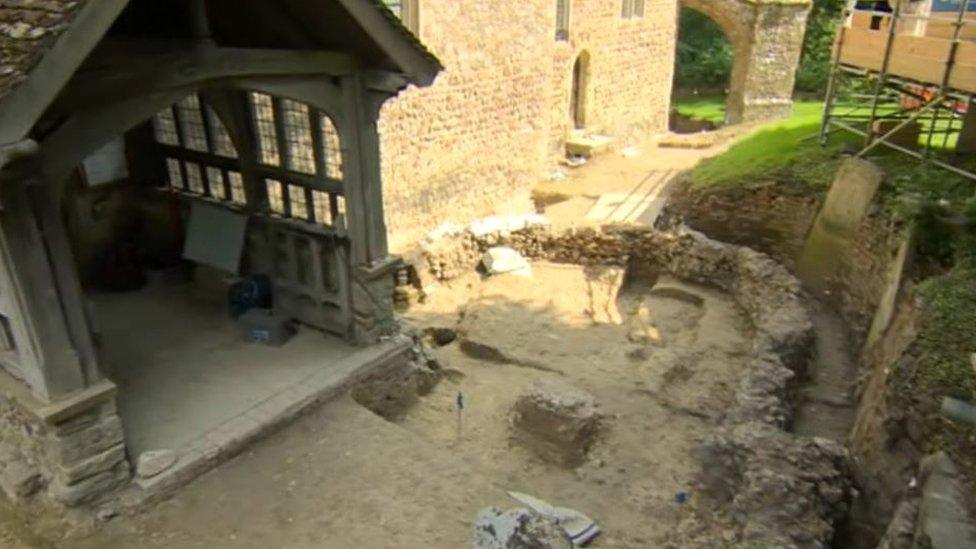Lyminge church dig reveals details of early Christianity
- Published

Findings have indicated stonemasons were brought in from France to supervise construction
Excavation work on one of England's first stone churches has unearthed details about early English Christianity and its links with France.
A team from the University of Reading has been re-investigating a site within a medieval churchyard in Kent.
Their work at St Mary and St Ethelburga church in Lyminge has unearthed a much older Anglo-Saxon building.
Excavation director Dr Gabor Thomas said: "The level of survival on this site is more than I had hoped for."
He said the finds "entirely justified" the re-investigation of a site which was first examined in the 1850s.
Dr Thomas, who lectures in archaeology at the University of Reading, said it was "hugely beneficial" to use modern techniques on an "internationally important site".
Tomb of a princess
The use of a distinctive pink mortar made from lime and crushed Roman brick indicates stonemasons were brought in from France for the construction, the university said.
Its chancel, separated from the nave by a distinctive triple arch, is also found in three churches from this date that are known elsewhere - all in Kent.
Meanwhile, a fragment of column from this arcade has demonstrated that stone was probably also imported.

Dr Gabor Thomas said it was a site of international importance
A fragment of the west wall missed in the first excavation had been found, confirming the church's precise dimensions.
The team said the church yard also contained a monastic settlement which grew up around the building.
The finds provide a vivid insight into how Anglo-Saxon society and its most important settlements were transformed through Christianisation, the university said.
The building style suggests it was founded by Ethelburga, a princess of Kent and Queen of Northumbria in the 7th Century.
In a small annexe to the north side, a structure has even been discovered which fits a description written about her tomb in the 11th Century.
However, the same account claims her bones were taken to a church in Canterbury, so there is no expectation of finding the original burial.
The excavation is part of a much larger community-based project called Pathways to the Past: Exploring the legacy of Ethelburga, which is being carried out by the church council.